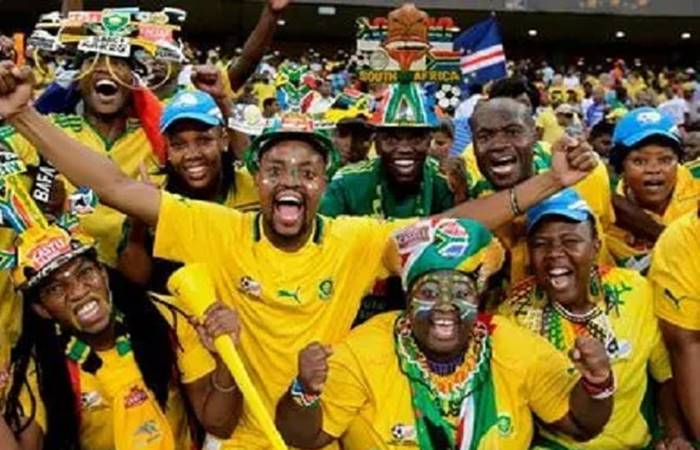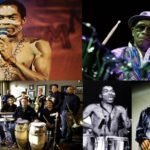
Football and music have always had a powerful connection, and in South Africa, this bond is especially vibrant. From the thumping beats of Kwaito in the early 2000s to the infectious rhythms of Amapiano that dominate playlists today, music has become a defining feature of football culture in the country. Whether it’s fans singing on the terraces, players vibing in the locker room, or goal celebrations synced with trending tracks, the synergy between South African music and football has only grown stronger over the years.
The Kwaito Era: Soundtrack of a Generation
In the post-apartheid era of the 1990s and early 2000s, Kwaito music emerged as a voice of the youth. Artists like Mandoza, TKZee, and Boom Shaka provided the soundtrack to South Africa’s urban life. Kwaito wasn’t just music; it was a lifestyle that reflected the aspirations and struggles of a new generation. Naturally, it became intertwined with football culture.
One of the most iconic moments was during the 1998 World Cup qualifiers when TKZee’s hit song “Shibobo” featuring football legend Benni McCarthy became an unofficial national anthem. The song sampled Europe’s “The Final Countdown” and blended it with Kwaito flair, creating a track that resonated in every township and stadium. It perfectly captured the energy and pride of South Africa’s football fans.
Gqom’s Emergence: Raw, Intense, and Rhythmic
Before Amapiano took over, Gqom brought a darker, more intense sound to the scene, especially in Durban. Its pounding beats and repetitive rhythm became a favorite among fans and players alike. While not as lyrically driven as Kwaito, Gqom’s energy was ideal for hyping up players before matches and pumping through stadium speakers.
Artists like DJ Lag and Babes Wodumo brought Gqom into the mainstream, with tracks like “Wololo” becoming anthems in their own right. Gqom also gained international recognition during the 2010 World Cup hosted by South Africa, a tournament that marked a turning point in the country’s football history.
Amapiano: The Current King of South African Football Soundtracks
Today, Amapiano is the heartbeat of South African youth culture and has seamlessly infiltrated the world of football. With its smooth piano melodies, log drums, and chilled vibes, Amapiano is the go-to genre for pre-match warmups, viral dance celebrations, and locker room sound systems.
Players from the PSL (Premier Soccer League) often share clips of themselves dancing to Amapiano tracks like “Bhebha” or “Adiwele.” Fans have created chants based on Amapiano beats, and stadium DJs now frequently mix trending Amapiano hits to engage the crowd. Even on social media, football content creators use Amapiano instrumentals to score their highlight reels.
Artists such as Kabza De Small, Young Stunna, and DJ Maphorisa have become household names partly because their music resonates not only in clubs and taxis but also on the football field. Their ability to set a mood and energize crowds mirrors the role of traditional football anthems.
How Music Unites Fans and Players
Music in football is more than background noise. In South Africa, it’s part of the experience. Chants, dances, and celebratory songs reflect cultural identity and unity. Whether it’s singing together after a goal or players performing the latest TikTok Amapiano dance after a win, music has become a form of expression and community.
This connection also extends to the youth leagues and grassroots football. Coaches and players often use music to create team spirit, ease tension, or celebrate victories. Local tournaments regularly feature live DJs spinning the latest hits, turning matches into cultural festivals.
READ ALSO: How Maskandi Music Preserves and Promotes Zulu Culture in South Africa
Looking Ahead: What Comes After Amapiano?
While Amapiano reigns supreme now, South African music is ever-evolving. New sub-genres and fusions may emerge, just as Gqom did before Amapiano. Whatever comes next, one thing is certain: music will remain a powerful part of South African football culture.
As long as there are games to be played and fans to cheer, the rhythms of Mzansi will echo from the township streets to the national stadiums.








 Disgraced SA Hockey Coach Brett Clay Deported from US Now Faces Local Abuse Allegations
Disgraced SA Hockey Coach Brett Clay Deported from US Now Faces Local Abuse Allegations  Diogo Jota Tragically Dies in Car Crash at 28 – From Stadium Glory to Sudden Goodbye
Diogo Jota Tragically Dies in Car Crash at 28 – From Stadium Glory to Sudden Goodbye  Cneh Mapulisha – Imikhuleko ft. Brownie N, Snowman & Lizile Sentiwe
Cneh Mapulisha – Imikhuleko ft. Brownie N, Snowman & Lizile Sentiwe  Taylor Swift Secures Full Ownership of Her First Six Albums After Buying Back Master Recordings
Taylor Swift Secures Full Ownership of Her First Six Albums After Buying Back Master Recordings  Mr Bathathe – Lengoma (Remix)
Mr Bathathe – Lengoma (Remix)  Felo Le Tee Biography, Net Worth, Songs, Family, Age, and Career
Felo Le Tee Biography, Net Worth, Songs, Family, Age, and Career